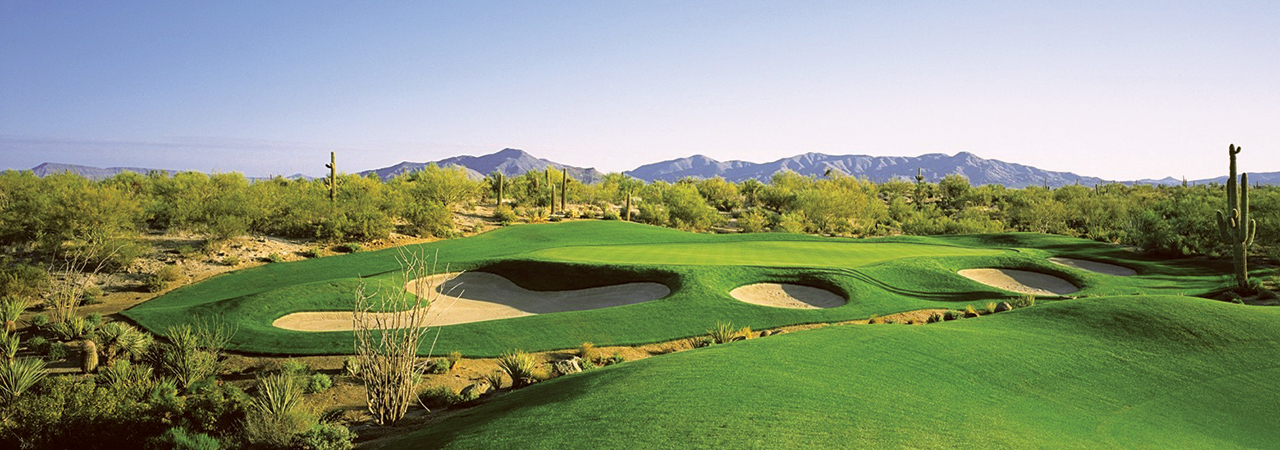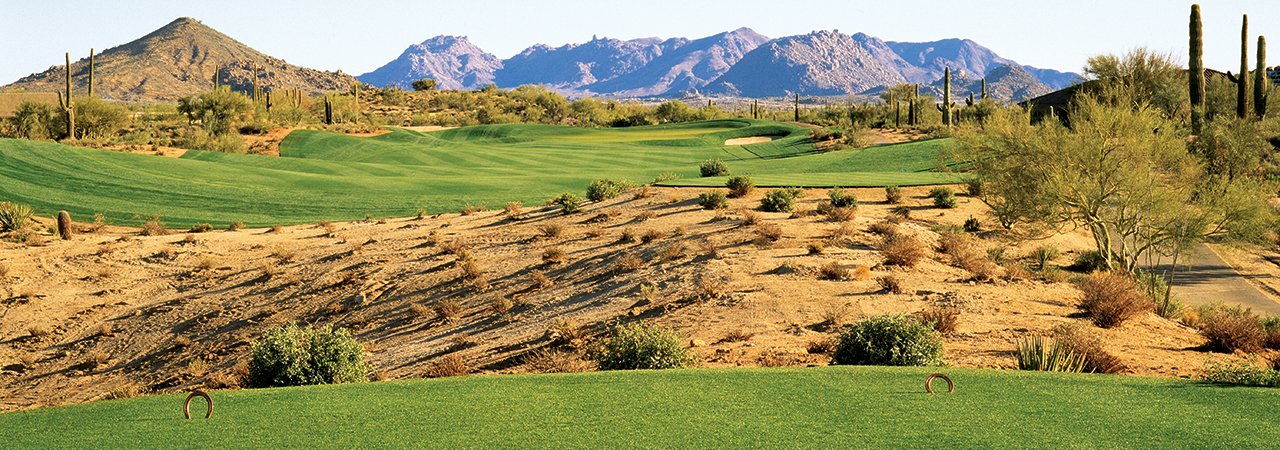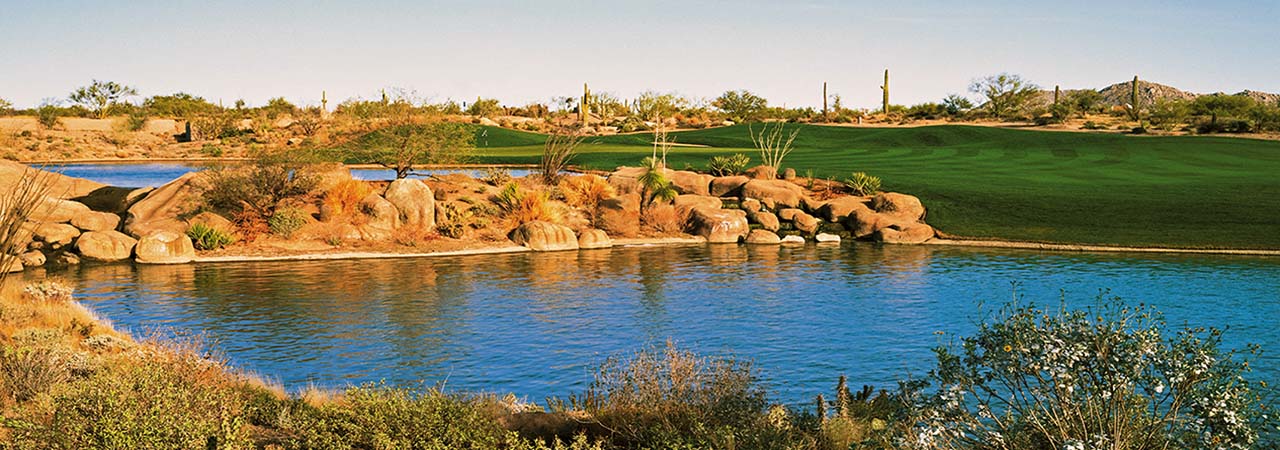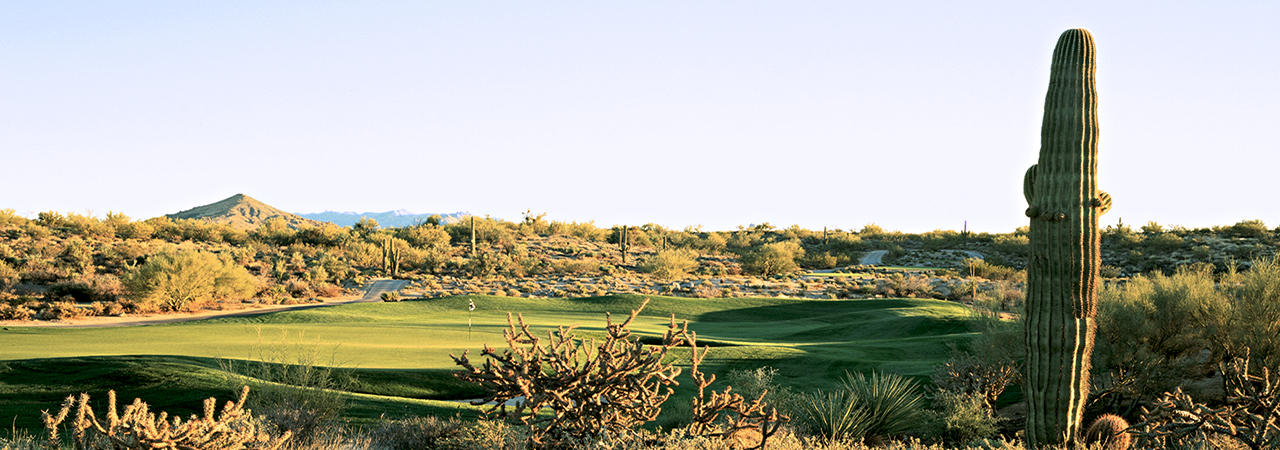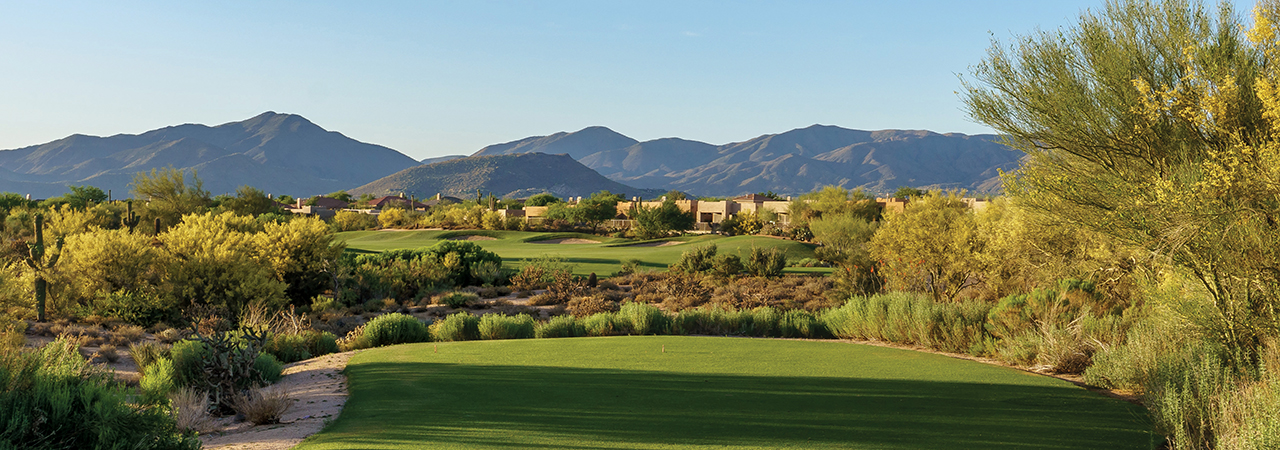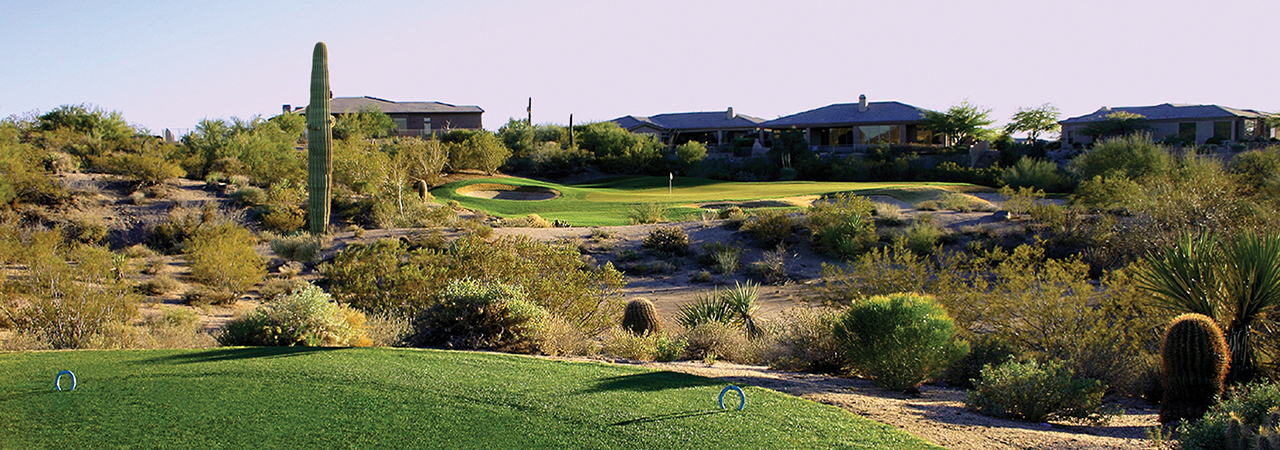Project Description
declared legends only after they’ve withstood the test
of time…however, Legend Trail achieved legendary
status when it opened in 1995
Project Overview
Legend Trail Golf Club was designed by Arthur Jack Snyder and Forrest Richardson. The developer, Michael Brown, acquired the property (formerly known as Desert Ranch) and began adjusting already approved plans in the mid 1990s. An original course layout for the site had been developed, but was altered by Richardson and Snyder.
Seeing new opportunities, the pair worked with land planners to retain natural areas and yet get yields for residential development that would drive the project forward. Forrest Richardson was responsible for taking the new plans through the City of Scottsdale’s highly complex Environmentally Sensitive Lands Ordinance (ESLO). Richardson and his client were successful. The approval for Legend Trail was the first golf course to go through the entire process of Scottsdale’s ESLO.
As construction began, the entire project and holdings were sold. The new owners, seeking a “name” golf architect, began searching for someone to put their name on the project. Richardson and Snyder assisted with this process. While they disagreed with the premise — that such a move was necessary, they recognized that it was ultimately not their decision.
Snyder was instrumental in personally speaking with some of the candidates. In the end, the Office of Rees Jones was engaged to work with the original designers, placing his “stamp” on the course as construction continued. Jones and his associate, Greg Muirhead, ultimately worked with Forrest Richardson to make changes to the original design a design that could only be changed nominally due to the previously approved, specific plans.
Forrest Richardson & Associates remained as the “golf architects of record” for the work, handling all irrigation design, lakes design and continuing to provide construction observation. The firm worked in tandem with the Office of Rees Jones, reviewing field sketches and weighing in on changes made in the field. Forrest Richardson served to make site visits along with Greg Muirhead.
The 6,800-yard, par-72 layout remains as one of Scottsdale’s most beloved high desert courses. Golfers from throughout the world have come to appreciate its classic and graceful design which melds well with the stark desert landscape. While many courses in the desert are nothing but endless target golf experiences, Legend Trail is different. Strategy and options abound. The golf course feels different for a desert course. This, perhaps more than any other comment, typifies the design that was created by the team.
Before his passing in 2005, Snyder commented, “It was a tough project, especially when the new owners came to us and asked about getting someone with a bigger name to be involved. Mostly, I felt bad for Forrest, as this was clearly the most exciting site he had ever worked with at the time.”
Snyder took the situation in stride. Even though he may have been bitter on the inside, he never was public with his feelings. “Jack was positive until the end,” notes Richardson. “It must have been difficult for him to realize that his name was not good enough for someone’s idea of marketing or promotion. As for me, I just focused on trying to help bring the best golf course to fruition. I made 55 site visits during construction. It was a passion for me to stay involved and help Greg and the shapers.”
The most significant alterations from the original design were Hole Nos. 13 and 17. At No. 13 Snyder/Richardson had designed on paper a par-5 with multiple landing areas and gambles, both off the tee and en route to the green. “As an uphill hole, we felt a par-5 that was reachable with the right combination of shot execution was the right approach,” says Richardson. The hole (as of 2018) remained a par-4 of about 450-yards.
At No. 17, the par-5 was altered to a par-5 in the field. “I can see the thinking behind the par-5,” admits Richardson, “But I am still convinced that a par-4 would be just as good — if not better.” The Synder/Richardson hole at No. 17 played about 460-yards with a desert arroyo crossing the fairway diagonally at the 260-yard mark from the back tees. “The wash affected the score,” notes Richardson. “As it is now, you can lay-up and still make a par.”
Regardless of the field changes — they happen all the time as golf courses get built — it is a certainty that all of the course golf architects share a sense of pride in the final outcome of Legend Trail, ultimately a collaboration between four golf designers.
“It is a quintessential desert design,” comments Richardson. “Seldom do you see classic style brought to the desert. Nearly all the courses here are target, forced and completely unnatural when you look at them objectively. At Legend Trail the final result is both beautiful and enjoyable — I love playing there, and so do almost any golfer you ever meet who is familiar with desert courses.”
Quick Facts
Scope: Planning, Community Site Planning, Design, Approvals, Environmental Approvals, Bidding, Construction Documents, Construction Observation Services
Course: 18-holes/Par-72/6,800-yards, Short Game Area, Range
Budget: $10.5 million USD
Completion: Opened 1995
Address: 9462 East Legendary Lane Scottsdale, Arizona 85256

